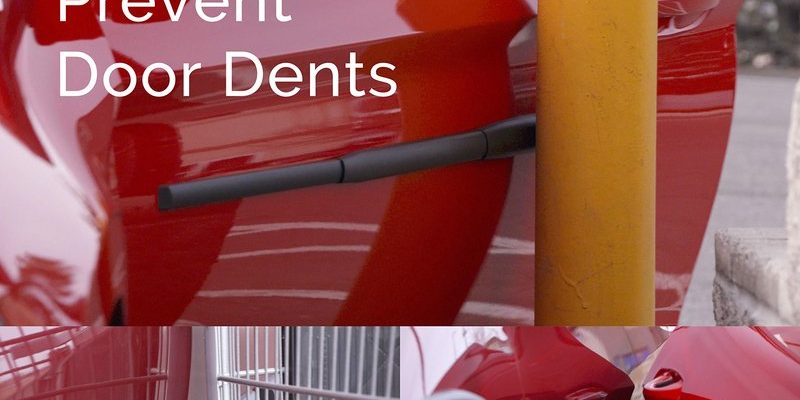
Imagine walking into a room and seeing a shiny doorknob that catches the light just right, versus one that’s dulled and scratched. Seems like a minor detail, but it makes a world of difference. Protecting your door hardware doesn’t have to be complicated, and it can save you from potential costs down the line. Here’s how to ensure your hardware stays not just functional but fabulous.
Understanding Why Door Hardware Gets Scratched and Dented
It’s important to first grasp why door hardware is so prone to damage. Everyday use can lead to wear and tear, especially in high-traffic areas. Think of how many times a day you touch a doorknob. Each interaction subjects it to the risk of scratches. Not to mention, bumps from bags, furniture, or even pets can leave their mark.
In addition, the materials used in door hardware play a role. While metal is durable, it’s not invincible. For example, a shiny brass handle can be prone to scratches from other metals or even from cleaning tools. If you’re using hardware that isn’t designed for heavy use, it may not withstand the rigors of daily life.
Understanding these factors can help you approach protection methods more effectively. After all, you can’t fix what you don’t recognize!
Choosing the Right Materials for Your Door Hardware
One of the first steps in protecting door hardware is choosing the right materials. When you’re at the hardware store, look for options that offer durability and resistance to scratches. For instance, stainless steel is known for its strength and resistance to corrosion. It’s a bit more expensive than other materials, but it pays off in longevity.
You might also consider powder-coated finishes. These not only look great but also provide a thick protective layer that can withstand dings and scratches. If you’re really concerned about visible damage, look for brushed finishes. They tend to mask scratches better since the texture diffuses light, making them less noticeable.
Finally, don’t overlook the option of protective coatings. Some companies offer clear sprays that create a barrier against scratches and scuffs. It’s a bit like giving your door hardware a shield.
Using Protective Covers and Pads
Sometimes the most straightforward solutions are the most effective. Using protective covers and pads is a simple way to prevent scratches on doorknobs and handles. Think about it: a small felt pad can easily be attached to the back of a doorknob. This prevents the knob from coming into direct contact with the door frame or other surfaces.
For hinges, consider using rubber or silicone bumpers. They act like little cushions and absorb the impact when doors slam shut. It’s a small investment for a huge benefit. Plus, these pads are generally easy to find and even easier to install.
Keep in mind that it’s essential to regularly check these pads. Over time, they can wear down and lose their effectiveness. So, a quick monthly check can extend their life significantly.
Cleaning Techniques to Avoid Scratches
Cleaning your door hardware seems like a simple task, but the tools you use can make a big difference. Instead of harsh chemical cleaners, opt for gentle, non-abrasive solutions. A mixture of water and mild soap can work wonders without damaging the finish.
When it comes to wiping, use a soft microfiber cloth. This type of cloth is designed to lift dust and grime without scratching surfaces. Avoid paper towels or anything rough—these can leave scratches behind.
It’s also a good idea to clean door hardware regularly. Dust and debris can build up over time, and when you go to wipe it down, you might accidentally scratch it. Set a schedule, perhaps once a month, to give your hardware some loving care.
Implementing a Maintenance Routine
Developing a routine for maintaining your door hardware is crucial. Just like you’d check your smoke detectors or change the air filter, you should regularly inspect your hardware for wear and tear. Look for signs of rust, scratches, or loose fittings.
You might also want to consider tightening the screws on doorknobs and hinges. A loose knob not only feels bad when you use it but can lead to even more significant damage over time. A simple twist of a screwdriver can keep everything secure.
Creating this habit doesn’t have to be a daunting task. Set a reminder on your phone or tackle it during regular cleaning. After a while, it becomes second nature.
Investing in Quality Hardware
Sometimes the best way to protect against future damage is to invest in quality hardware from the start. While it might be tempting to go for the cheapest option, remember that quality often translates to durability.
Look for brands known for their sturdy construction. Reading reviews can help you find products that not only look good but also stand the test of time. If you’re unsure, ask a knowledgeable salesperson for recommendations.
A higher initial cost can save you money in the long run. It’s about getting the most value for your investment, and quality hardware can really make a difference in preventing scratches and dings.
Protecting your door hardware from scratches and dings doesn’t have to be a complicated process. With a few smart choices and some regular maintenance, you can keep your hardware looking great for years. Remember to choose durable materials, use protective covers, clean gently, and inspect regularly.
By taking these small steps, you’re not just safeguarding your doorknobs and hinges—you’re enhancing the overall look and feel of your home. A little effort now can lead to big rewards later. So, let’s get started in making those doorknobs shine again!
